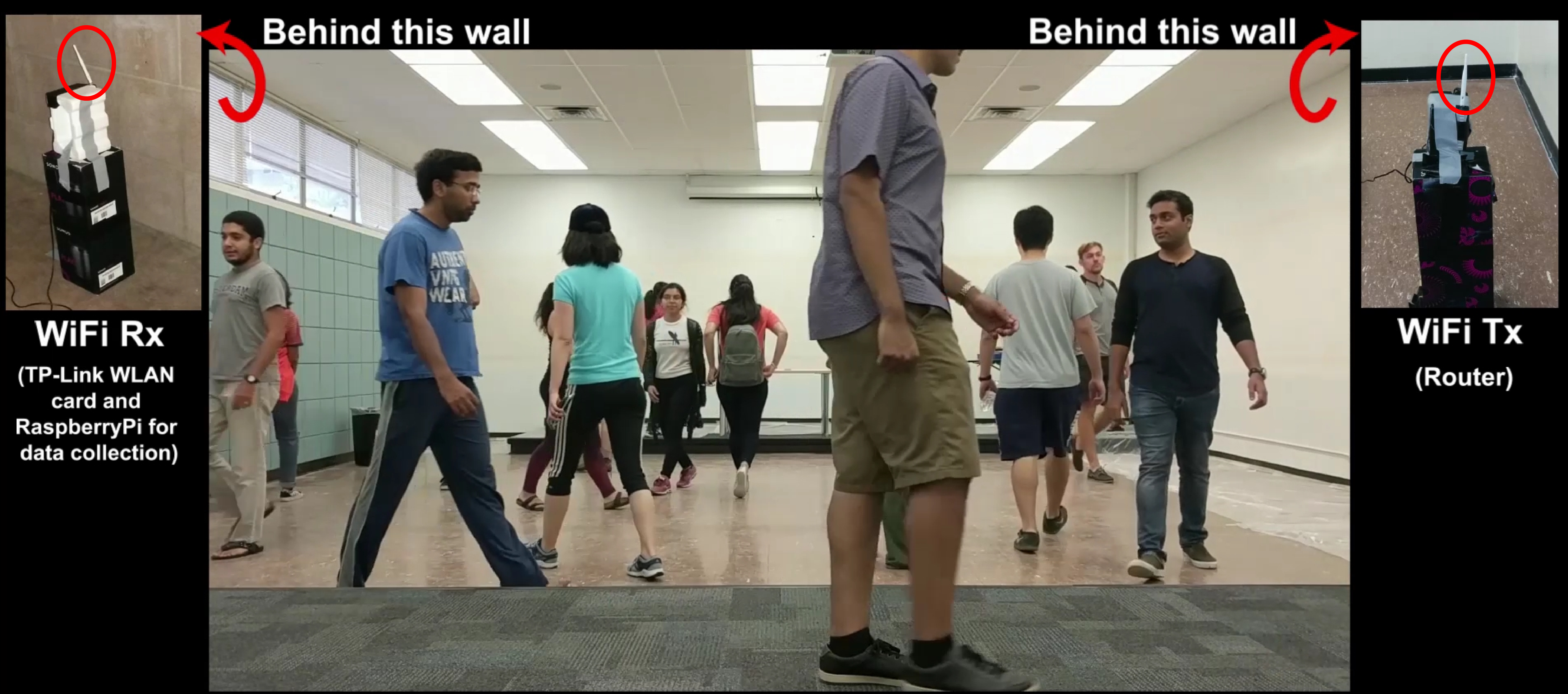
|
Crowd Counting Through Walls With WiFi
In the News (2018): Tech Crunch, Digit, New Atlas, The Register, Science Daily, UCSB Current, and other outlets
WiFi signals are everywhere these days. Can they do more than communication? For instance, can they count the total number of people in an area from behind the walls? Can this be done with only WiFi power measurements and without relying on people to carry a device? In this project, we have shown that this is indeed possible and have enabled the first demonstration of crowd counting through walls. See the video and the paper for more details and results. |
Advisor: Yasamin Mostofi
Graduate Student: Saandeep Depatla
S. Depatla and Y. Mostofi, "Crowd Counting Through Walls Using WiFi," in the proceedings of the IEEE International Conference on Pervasive Computing and Communications (PerCom), 2018.[pdf]
We have proposed a new approach that has enabled the first demonstration of crowd counting through walls with only WiFi received power measurements, and without relying on people to carry a device. As an example, consider the room in Fig. 1 below with a WiFi transmitter and receiver outside, behind the walls, as marked. A number of people are present in this room. The transmitter transmits a wireless signal whose received signal strength (RSSI) is measured by the receiver for a brief period of time. Can we count the total number of people from behind the walls, based on only such received power measurements? This a considerably challenging problem as the walls will severely attenuate the signal. In this project, we have proposed a new methodology that has enabled the first demonstration of crowd counting through walls.
Here are some key features of our proposed approach:
 |
| Figure 1. A WiFi transmitter and receiver are inserted outside of a classroom, behind the walls. We are interested in counting the total number of people in the room, from outside, based on only the received signal power measurements of this link, and without relying on people to carry a device. |
Consider the discrete event sequence that corresponds to the significant signal drops, and the corresponding inter-event times, as shown in Fig. 2 below. We have observed that while the amplitude of the signal can be severely attenuated through walls, the inter-event times are more robust to wall attenuations. Thus, we propose to exploit them for crowd counting through walls and fundamentally characterize how much information they carry on occupancy.
 |
| Figure 2. A demonstration of the discrete-event sequence corresponding to the events of significant signal drops (S1,S2, ...), as well as the corresponding inter-event times (T1, T2, ...). |
More specifically, we propose to model the discrete-event sequence corresponding to the movements of one person as a renewal-type process. Then, the discrete event sequence corresponding to the movements of N people is the superposition of N renewal-type processes. A renewal process is an extension of the Poisson process, where the inter-event times can have any distribution. Such a process has found applications in areas such as reliability and risk analysis. We then utilize mathematical tools from the renewal process literature to fundamentally understand the amount of information the received signal carries on occupancy in our problem of interest.
After a long derivation and analysis, we have developed a new mathematical model that explicitly relates the statistics of the inter-event times to the total number of occupants in the area, as summarized in the following theorem:
 |
It is noteworthy that in our past work JSAC 2015, we had shown crowd counting with WiFi signals, but with the transmitter and receiver in the same area as people. Enabling through-wall crowd counting, however, is considerably more challenging due to the high level of attenuation by the walls, necessitating a new approach, which is the main motivation for the proposed methodology of this project.
We have tested our proposed approach extensively in several through-wall scenarios. Here, we show sample experimental results where a pair of WiFi cards are used for counting people through walls.
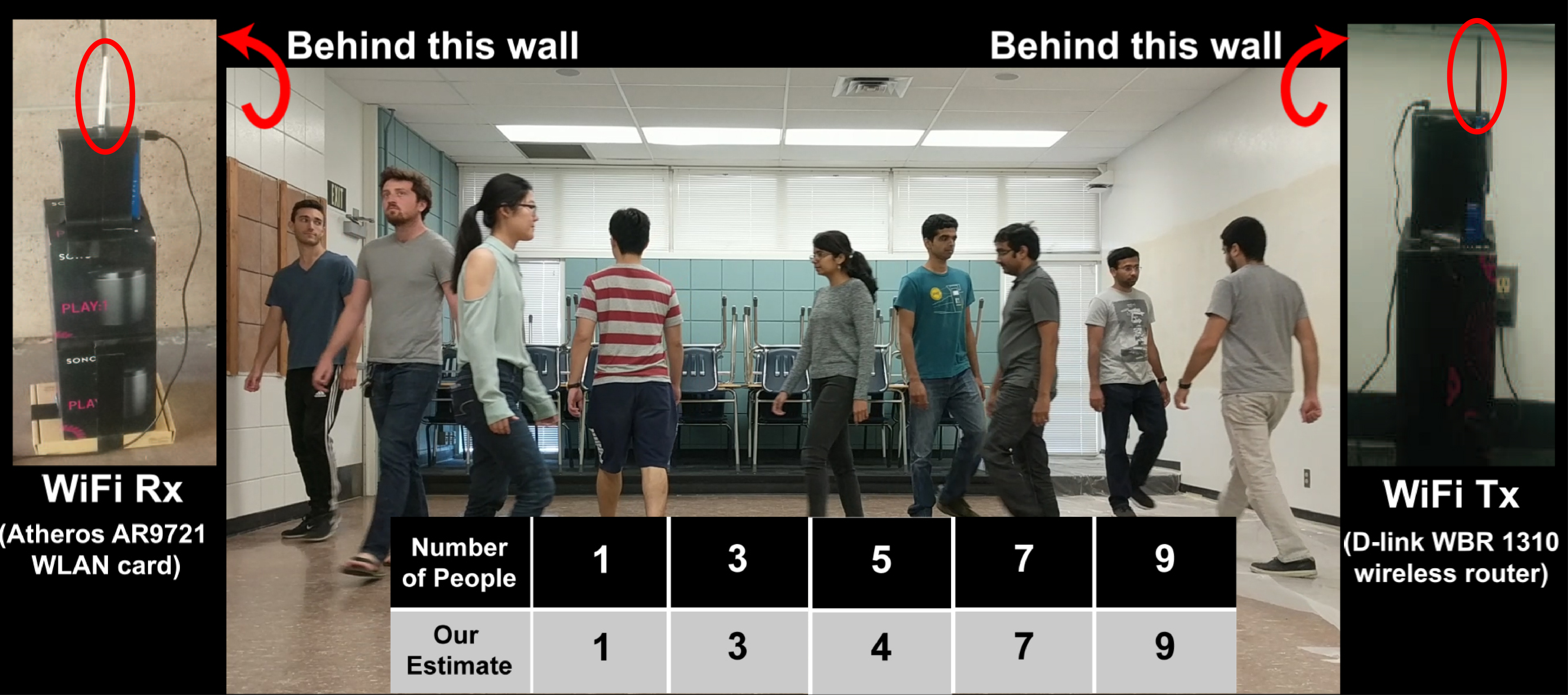 |
| Figure 3. A WiFi transmitter and receiver are inserted outside of this room where the walls are made of concrete. The table shows the performance of our proposed approach when different number of people walk in the area. |
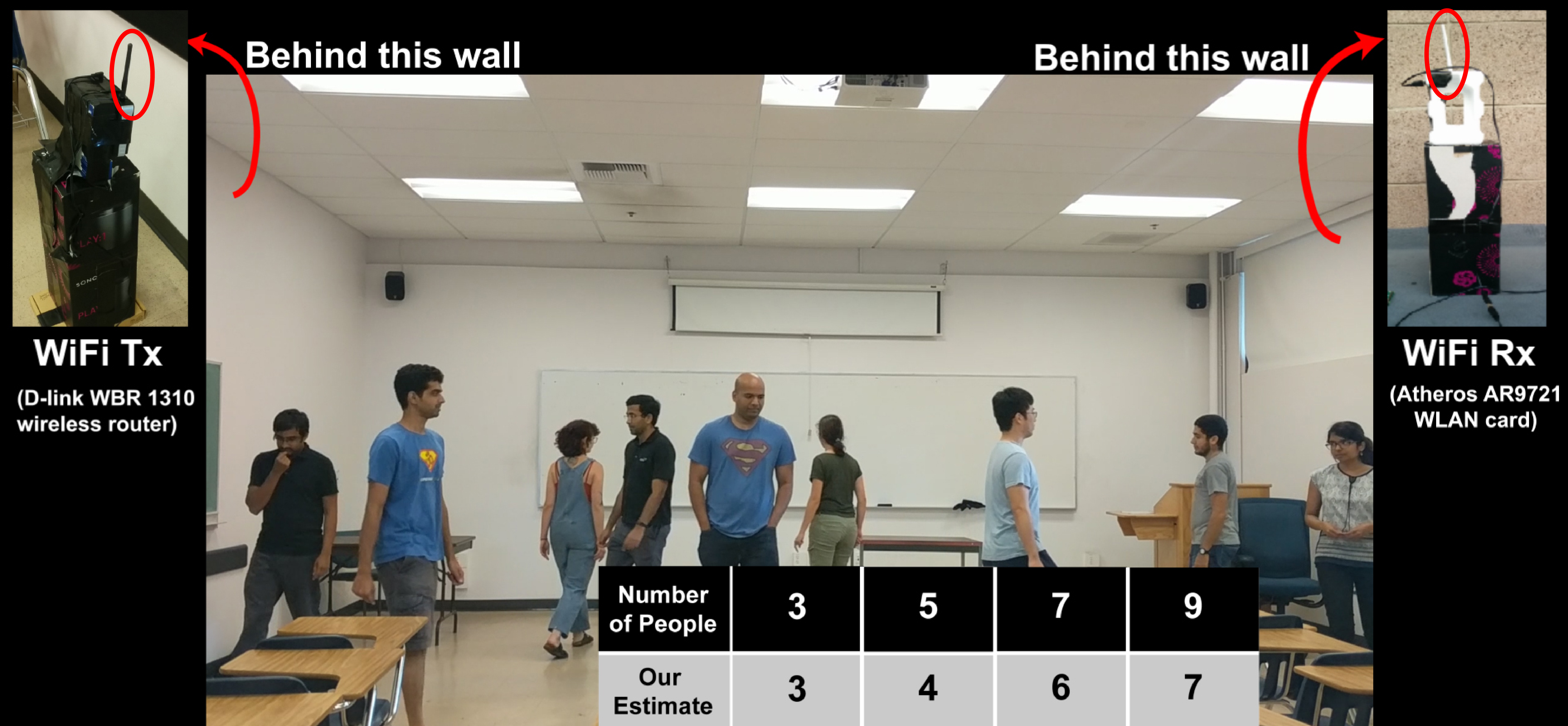 |
| Figure 4. A WiFi transmitter and receiver are inserted outside of this room where the walls are made of concrete. The table shows the performance of our proposed approach when different number of people walk in the area. |
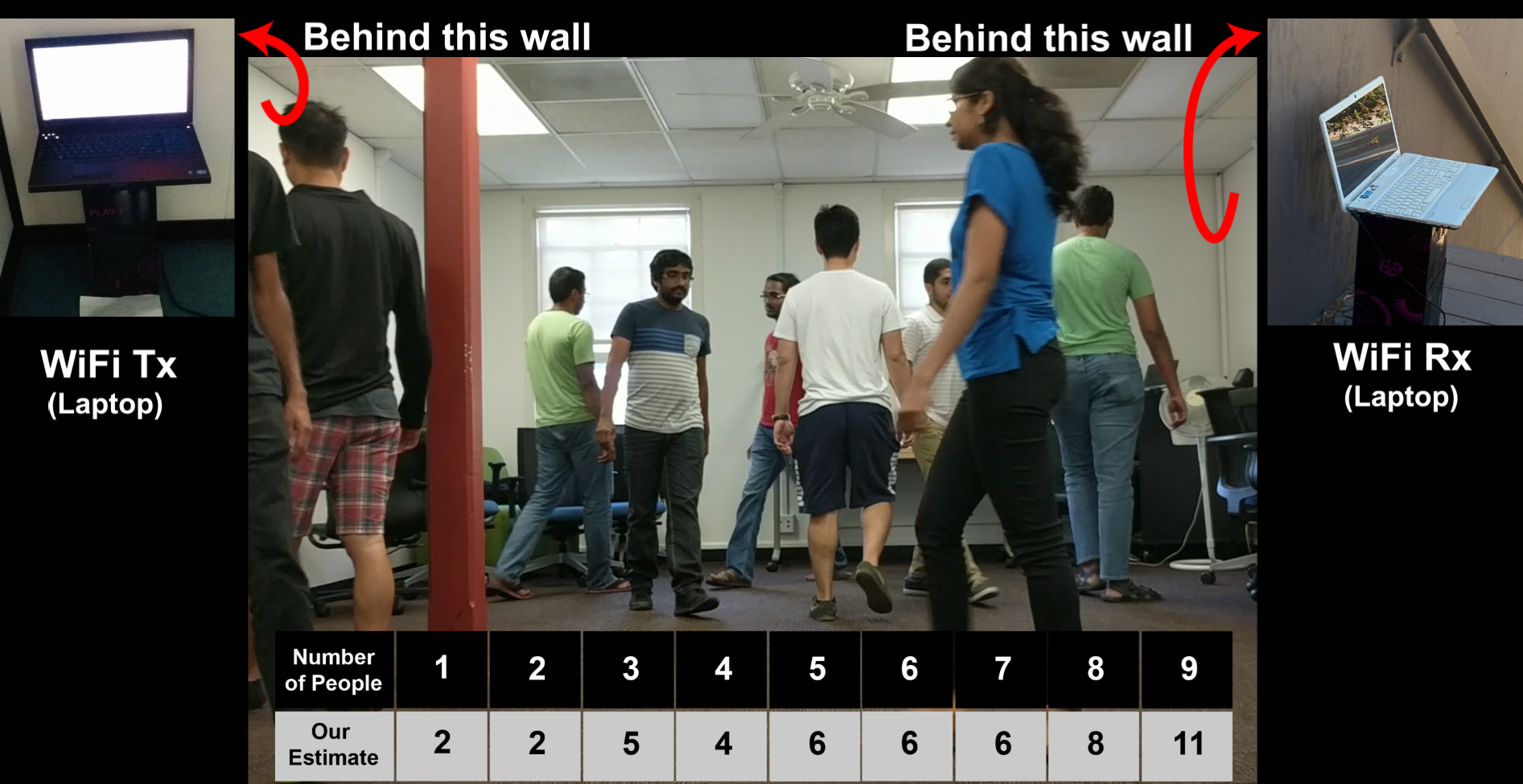 |
| Figure 5. A WiFi transmitter and receiver are inserted outside of this room where the walls are made of wood. The table shows the performance of our proposed approach when different number of people walk in the area. |
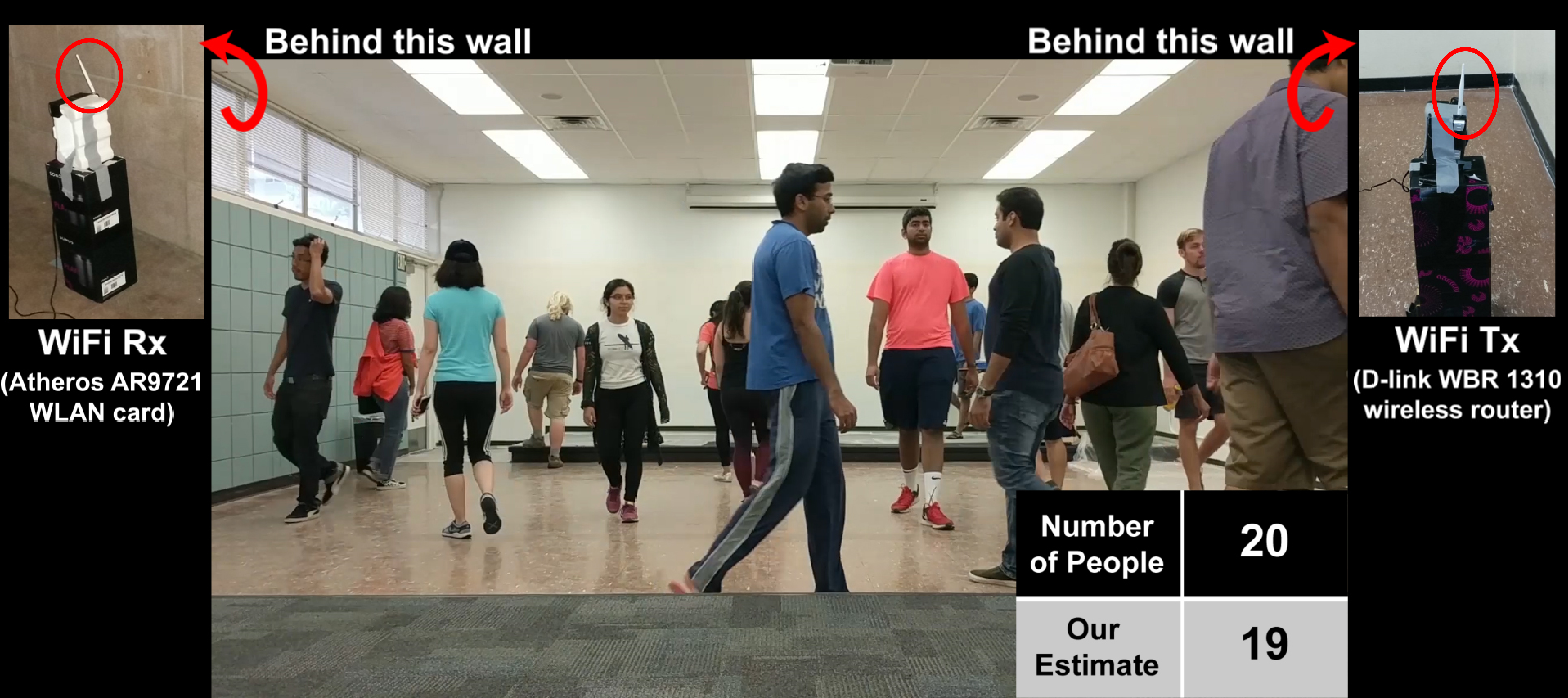 |
| Figure 6. A WiFi transmitter and receiver are inserted outside of this room where the walls are made of a mixture of concrete and plaster. 20 people were present in this room and our proposed approach counted them as 19. |
Overall, we ran 44 experiments in different locations, with different wall properties, and several different number of people, and achieved an estimation error of 2 people or less, 100% of the time. This is estimation through highly-attenuating walls such as concrete that can attenuate the signal 20 dB per 10 cm. It is noteworthy that our approach does not need prior calibration in the area of interest.
There are several potential applications that can benefit from an estimation of how crowded an area is, especially through walls. Smart energy management in buildings (e.g., heating/cooling, or lighting), retail business planning, and security/search and rescue are a few sample applications. More specifically, lighting or heating/cooling of a building can be better optimized based on learning the concentration of people over the building. Stores can benefit from counting the number of shoppers for better business planning. Emergency evacuation can also benefit from an estimation of the level of occupancy.